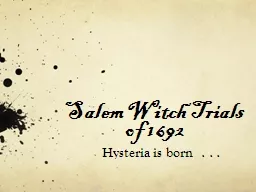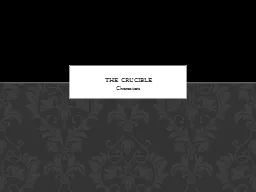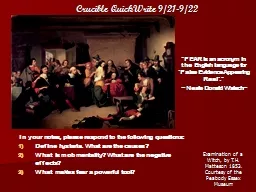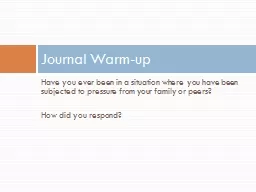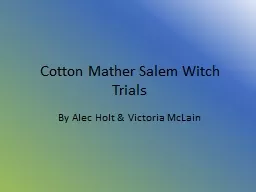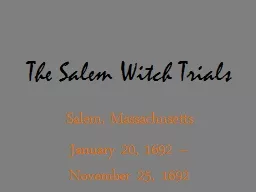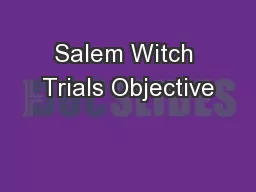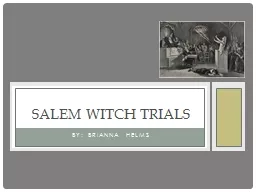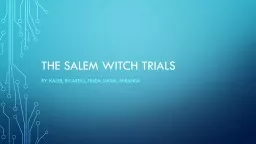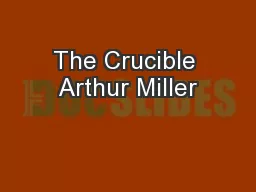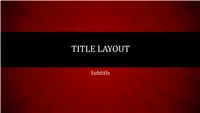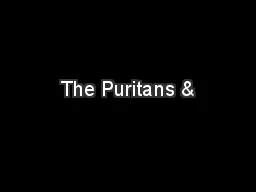PPT-Salem Witch Trials
Author : kittie-lecroy | Published Date : 2017-08-30
of 1692 Hysteria is born The Big Ps and the little ps Pilgrims Pilgrim a traveler one who has come from afar to a religious or holy land Known as the Separatists
Presentation Embed Code
Download Presentation
Download Presentation The PPT/PDF document "Salem Witch Trials" is the property of its rightful owner. Permission is granted to download and print the materials on this website for personal, non-commercial use only, and to display it on your personal computer provided you do not modify the materials and that you retain all copyright notices contained in the materials. By downloading content from our website, you accept the terms of this agreement.
Salem Witch Trials: Transcript
Download Rules Of Document
"Salem Witch Trials"The content belongs to its owner. You may download and print it for personal use, without modification, and keep all copyright notices. By downloading, you agree to these terms.
Related Documents

